Scotland by Motorhome! Hints & Tips 2025
We’ve just come back from a month long tour of Scotland in our motorhome. While it’s fresh in our minds, here are some hints and tips we learned from this and other Scottish motorhome trips. We’ll cover places to stay overnight, using ferries, navigating single track roads, internet access, the dreaded midges, buying food and gas and more.
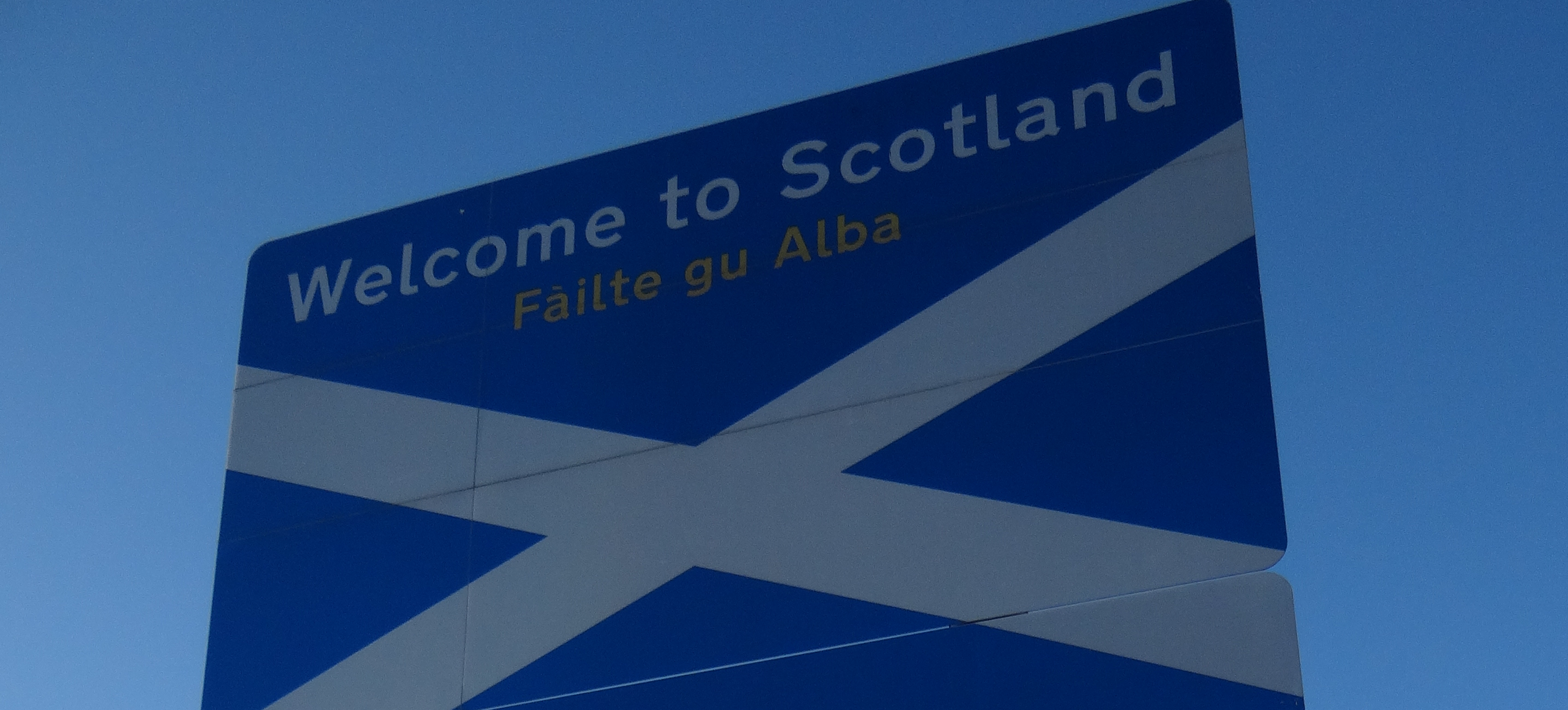
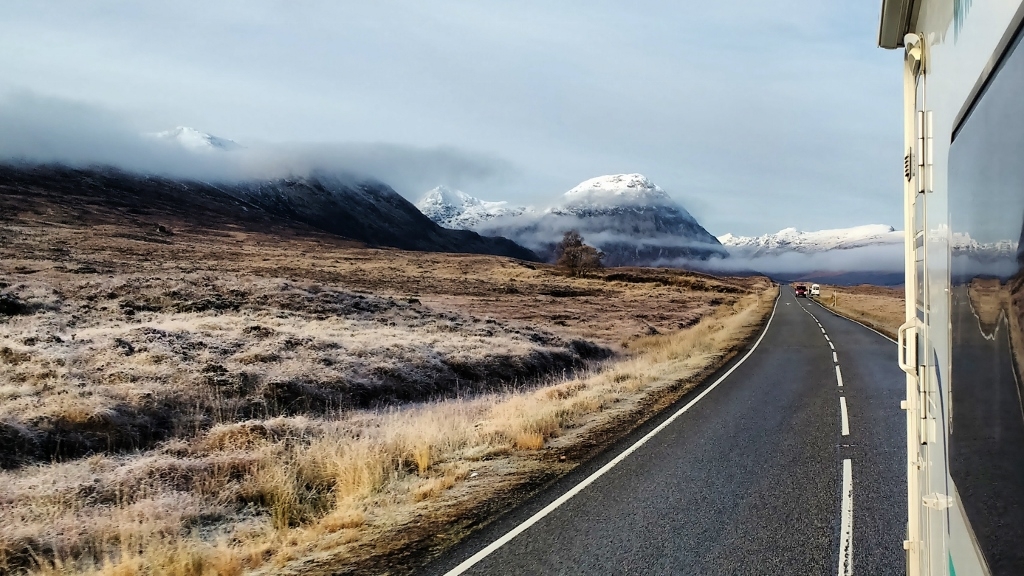
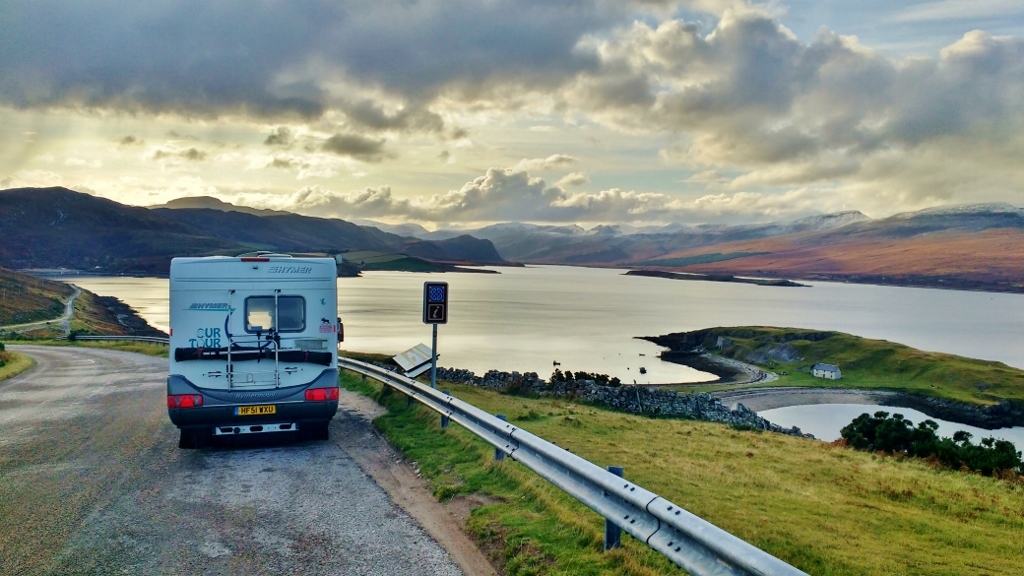
Why Scotland?
For us Scotland is all about the scenery. We enjoy the vibrant towns and cities, but the real draw is the sea, fells, moors, mountains, beaches, lakes. Much of Scotland feels remote. It has a gentler pace compared to frenetic lands further south. The islands take this a step further, edging us further away from the stresses of modern life, although they’re surprisingly easy to reach.


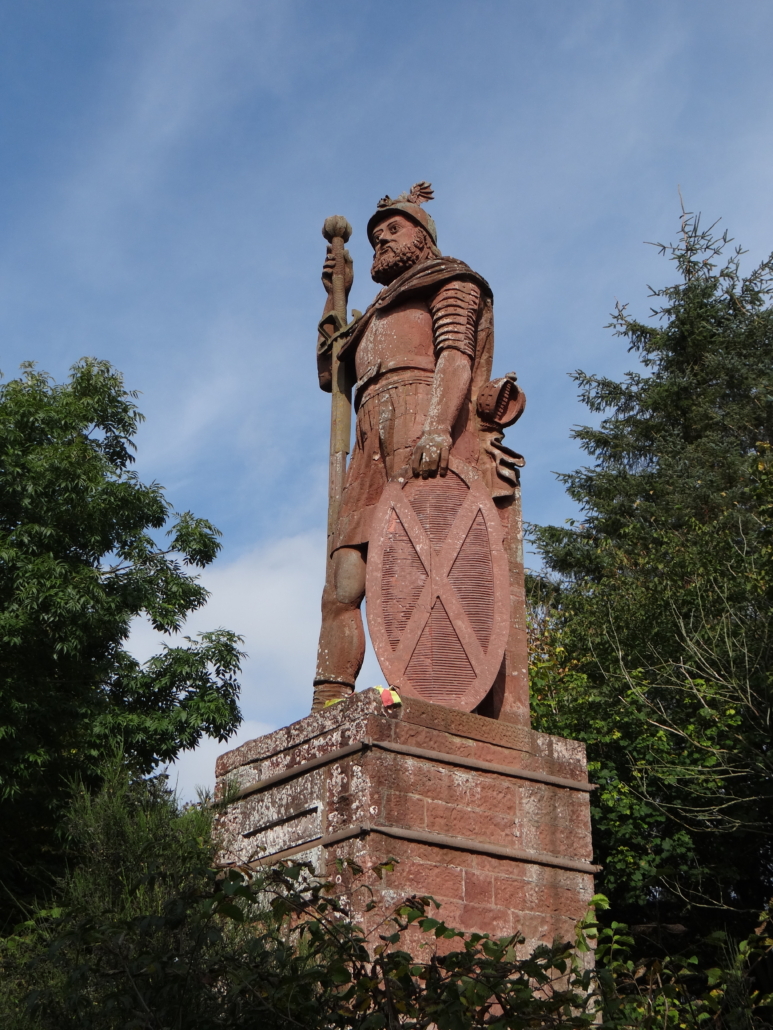
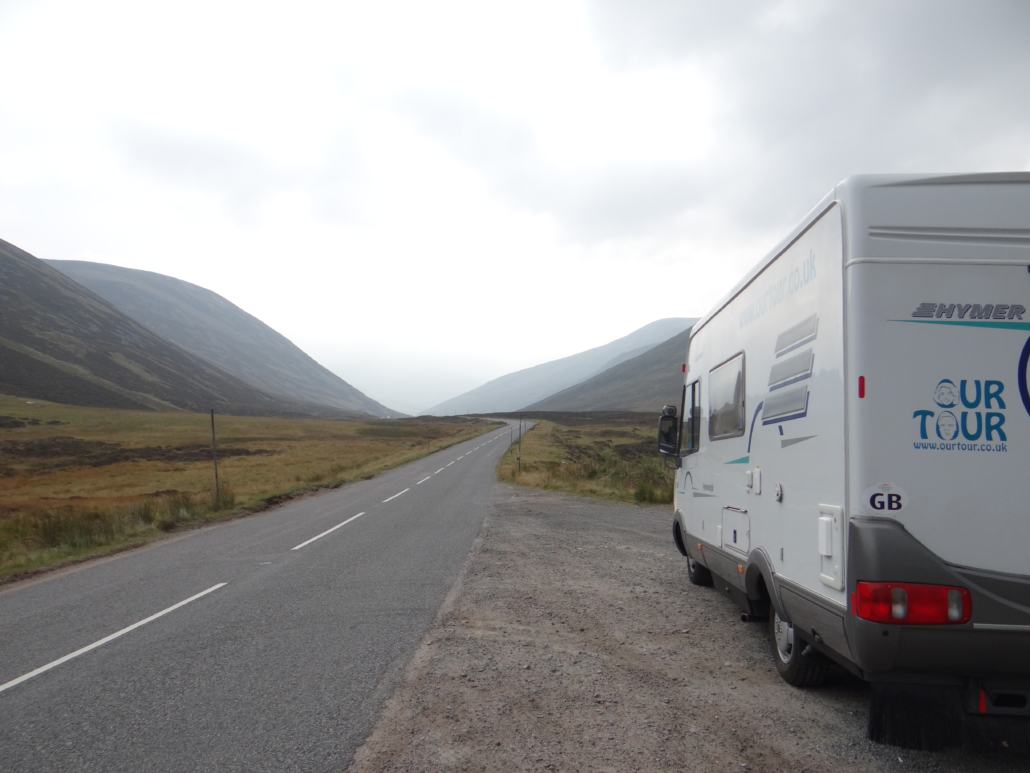
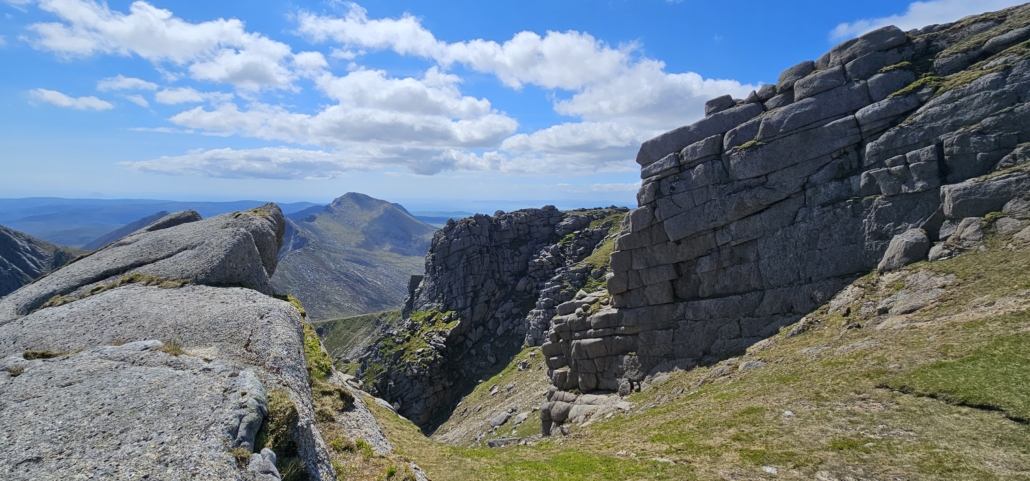
Scotland’s history comes a close second. A long-lived place full of echoes of vikings, warring clans and wrestles for power with the English. On this trip we visited pre-historic stone circles, cairns and burial chambers. We saw the ruins of clearance cottages, castles built by the powerful in more violent times, slate quarries and a UNESCO-listed industrial revolution ‘model village’ cotton mill.
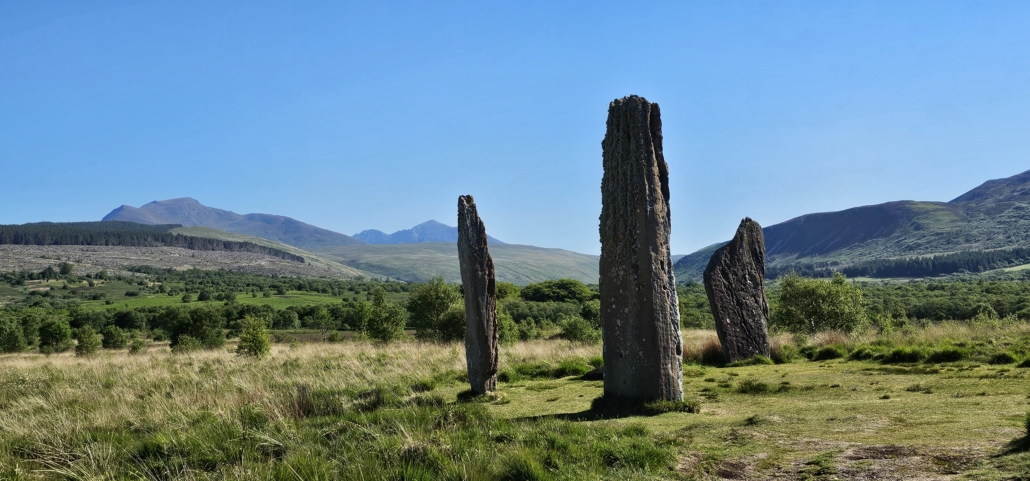
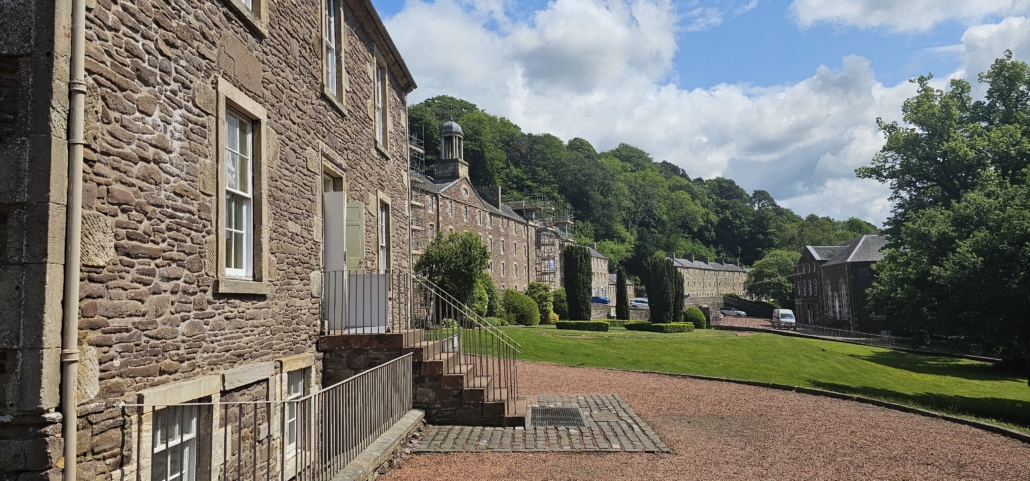

Scotland is very popular with motorhome tourers. The same things which draw us, draws others too. Wild camping is one of them. There is definitely more freedom on places to park in Scotland than the rest of Britain. More about that later.
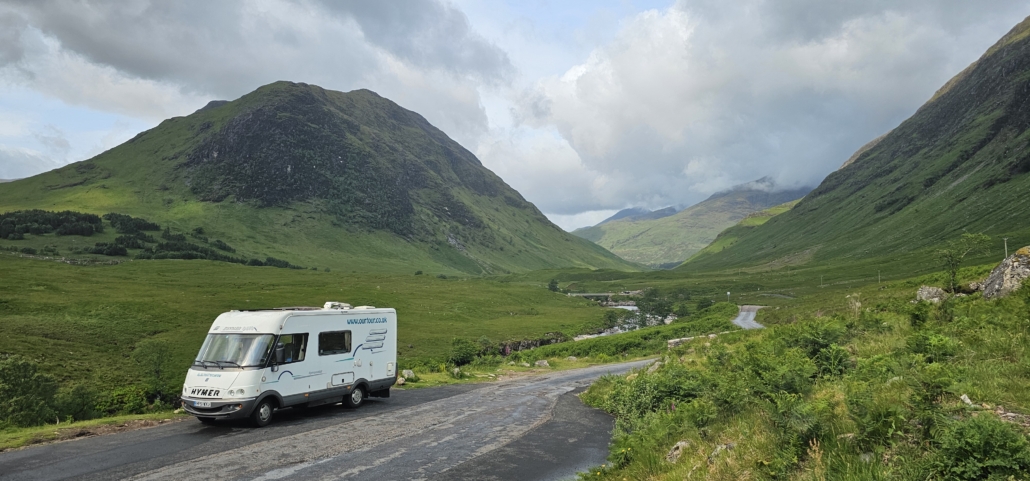
We saw many rental motorhomes and panel vans (roadsurfer ones looked popular). We chatted with Scottish, English, German and Irish motorhome owners who’d taken ferries and/or driven from their homes to explore. From our home in Nottingham motorways carry us all the way to the border in around five hours.

North of the border the motorway network thins out, and the top third of Scotland has no motorways. The roads narrow and twist, and the pace of travel slows. As you reach the more remote areas, particularly on the west coast and on the isles, the tarmac shrinks to single-track with passing places. The bin lorry gets down these, so we can too, with care.

On our latest trip we really enjoyed keeping an eye out for wildlife. Otters, seals, porpoise, an adder, Golden Eagles, Oyster Catchers, Red and Roe Deer and barrel jellyfish and made an appearance. In places we could watch seals and deer from the van, quite a privilege.
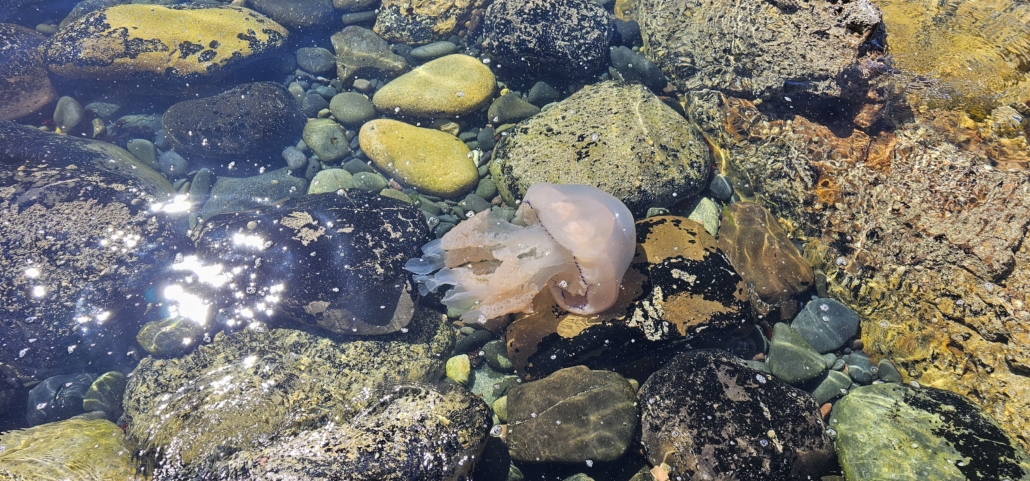


Scotland and Wild Camping in a Motorhome
Subject to common sense restrictions (have a read of the Outdoor Access Code), folks carrying a tent on their backs or bikes can pitch up and sleep the night across most of Scotland. The same right doesn’t extend to motorised transport. If landowners want to, they can place a sign indicating you’re not allowed to overnight in specific areas of their land. Or just come and ask you to leave.
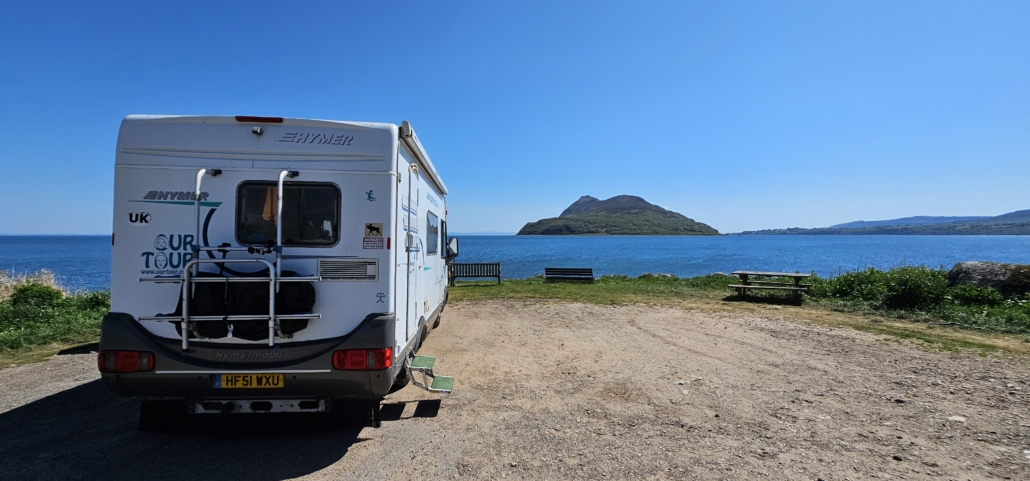
In practice, wild camping (any overnight parking away from an official aire, designated motorhome parking area or campsite) is widely possible in Scotland. That’s not to say we can wild camp anywhere. Some of the islands, for example, are under so much pressure they’re asked visitors to secure a campsite booking before boarding the ferry (info from CalMac ferries here). We’ve not witnessed this but heard a few times on this trip just how busy Skye was with vans, even in May.
As usual when staying off-site, ‘camping’ in this context means being parked up, with nothing placed outside (with the exception of wheel ramps to get level). You’ll generally need an on-board loo, unless you’re willing to restrict yourself to the parkups which have public facilities nearby which are open 24/7.
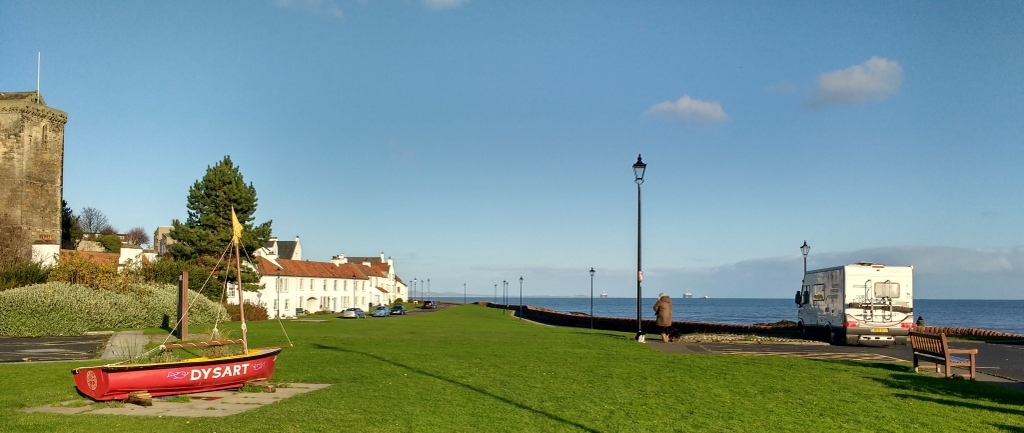
Most folks find wild camps with park4night and search4sites. These list official places too, and in practice we used park4night to find all kinds of overnight stay. Be aware the quality of wild camps on these apps varies widely. Some app users are sleeping in a car or tradesman’s van (which is far more ‘stealthy’ than a motorhome), using 4x4s (which can access very rough ground) or huge A class motorhomes (which can’t access some campsites and aires).

Everyone’s wild camping requirements differ. While I might be happy to pitch in a corner of Lidl’s car park for the night (we’ve done it before, albeit in Spain a long time ago), someone else would be horrified by this. Check the reviews and eyeball the location and access road on Google Maps if you can before heading for a wild camp. Have a back-up or two in case it’s full or unsuitable for some other reason (too muddy, too small, already full, sloping, being used for an event, right outside someone’s house etc).
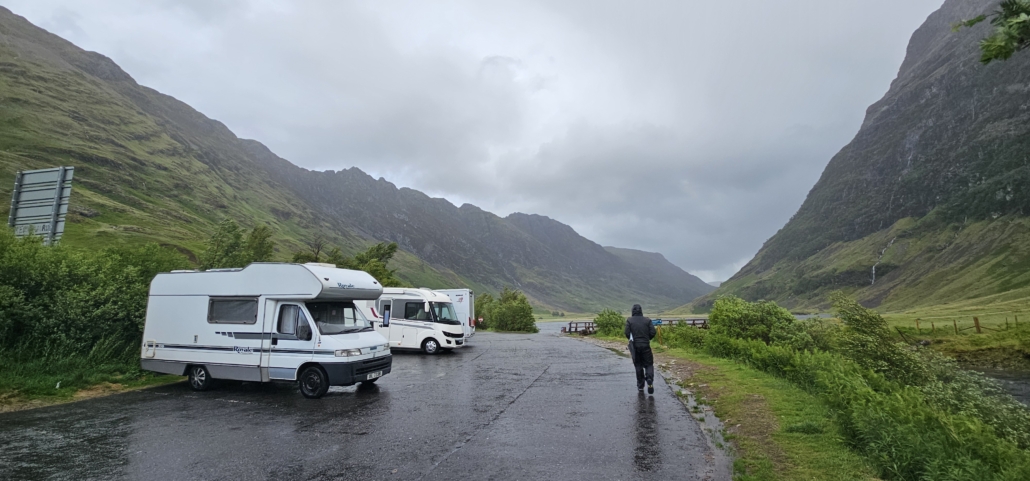
We met a few motorhomers on our recent trip who never pay to use campsites. Many places provide stand-alone (not part of a campsite or aire) waste disposal/fresh water facilities either for a set fee or donation (this map shows a few of them). Some campsites and aires allow ‘drive-by’ use of their service point, typically for about £10. Unlike Ireland, bins are widely available (with the caveat we shouldn’t fill small ones so other tourists can’t dispose of their rubbish). We tend to bag up and store rubbish on-board in an outside locker until we’re on a campsite. If you’re not reliant on mains electricity or toilets, you could wild camp endlessly in Scotland.
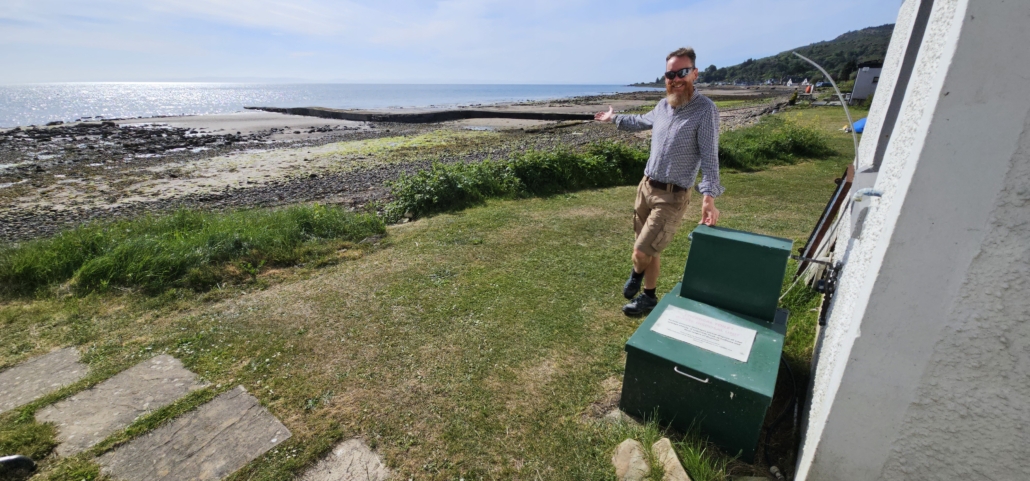
We choose to use a combination of overnight options: campsites, aires, designated motorhome parking, business parking (typically pubs, see Brit Stops) and wild camps. It’s just personal preference and we find we sleep better when we’ve paid to stay. On our most recent trip we paid between nothing and £35 a night for two people with a 6m motorhome and mains hook up. Aires and official overnight parking tend to cost around £10 to £15, although we saw this aire on Arran charging up to £44 a night. Campsites averaged £30 a night.
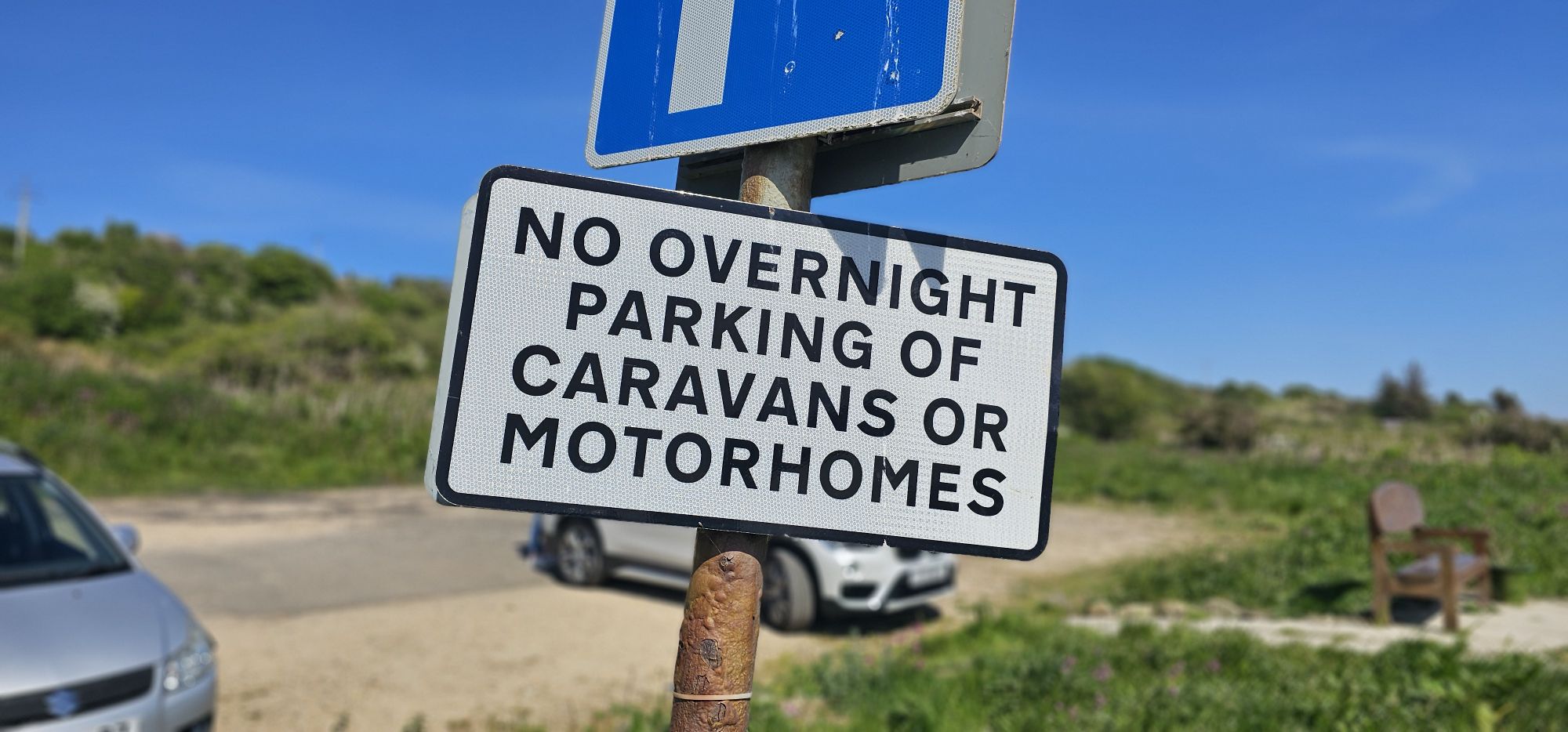
We’re in no position to preach about wild camping, as we’ve parked up pretty much everywhere in our time! It’s worth being aware of local sensitivities though. Scotland is very popular with motorhomes and we can all pay it forward by keeping the locals on side:
- Never park in passing places on single track roads, even for just a photo.
- Don’t pack out a parking area with so many vans the locals can’t park to go fishing or walk their dogs.
- Don’t dump any kind of waste anywhere other than a designated place, including grey water.
- Areas of Scotland burn in wild fires during dry weather, so fires and charcoal BBQs are frowned upon.
- Avoid parking on grass or machair.
- Don’t stay more than two or three nights in one place.
- Follow the golden rule: leave no trace.
Campsites, Aires, Business Parking and Paid Car Parks
In addition to free parking/wild camping, Scotland has a huge number of options for official overnight stays. Many of them are in stunning locations, and make for a relaxed night. Here are your options:
Campsites in Scotland
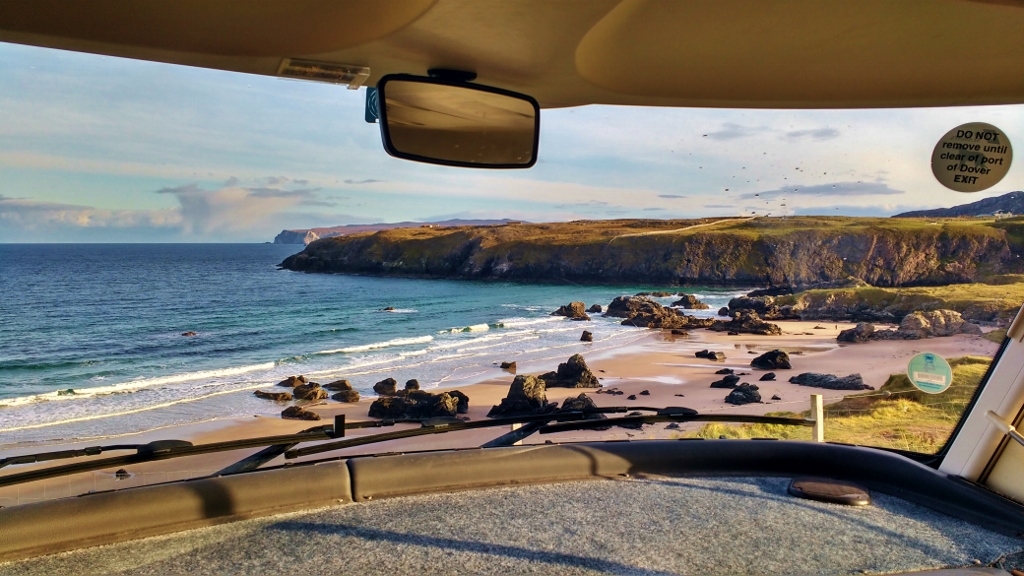
We stayed on a range of campsites on our trips to Scotland, big and small. Although we found some on park4night, the reviews on there can be quite harsh, so it’s hard to assess whether they’re a good site or not. Some folks leave a one star review if the site won’t let them use their service point in passing, others if it was closed when they arrived in winter and one reviewer was upset the site wouldn’t rent him a pitch by the hour while he waited for a ferry. Harsh indeedy.

So, to get more accurate reviews we tended to use ukcampsite and also looked for reviews on Google Maps. These show more campsites than park4night, and had far more reviewers, so gave a more accurate picture. Ukcampsite also has tons of filters, so you can choose to list sites which accept motorhomes, are near pubs or beaches, are open all year, allow dogs and so on.
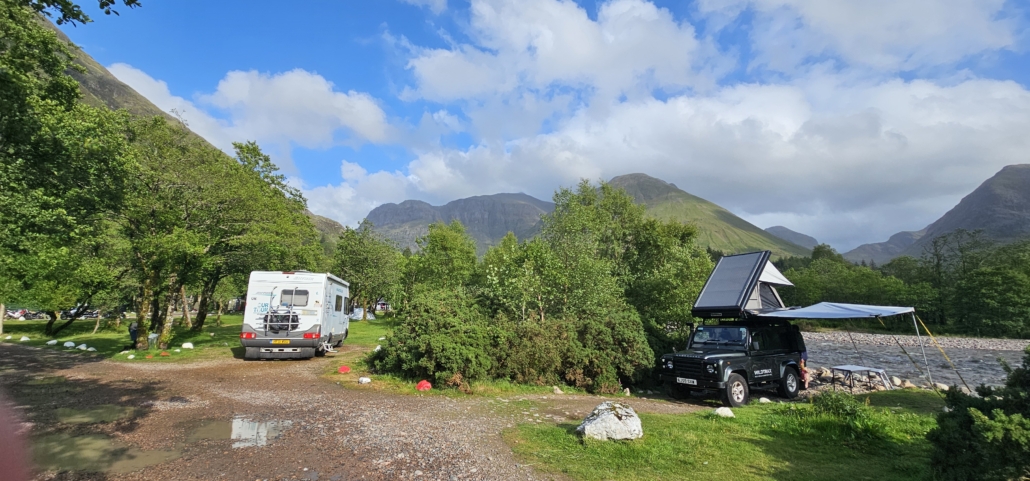
We mostly booked campsites a couple of days ahead, even in May. They were often busy. The one we didn’t book, Seal Shore Campsite on Arran, was full for the next seven days when we called them after arriving on the island. That’s a relatively small and very popular site though. Some others were fairly quiet but to be honest most were surprisingly busy in late May and early June. In summer we’d definitely book way ahead if we wanted to stay on a specific site. Just check the site’s refund policy before you do this though.

We tended to book by either calling the campsite, or finding their website through Google Maps, then using it to book. Pitchup.com and www.hipcamp.com are other options, which map out sites across Scotland, shows their availability and let you book online. Some sites didn’t have a manned reception, so we were emailed our pitch number and a code to access the site. Others had a manned reception, but again sent details for us to head straight to our pitch so we didn’t have to wait in reception on arrival.
If you’re a member of the Camping and Caravanning Club and/or the Caravan and Motorhome Club, these have top-quality sites across Scotland, many of which you can book online. These don’t tend to be the cheapest option, but rules do tend to be enforced (so you can expect a quiet night) and facilities kept in great condition. As well as the larger sites, they have smaller ones called Certified Locations and Certified Sites, which are great if you’re self-contained.

Aires in Scotland
Aires are low cost, no-frills, no shower block park-ups, styled on a continental European concept. There are a seemingly growing number of aires in Scotland. These charge by the pitch, so there’s no additional charge for larger parties (and no discount if you’re a solo traveller). None of the aire owners we used required us to book ahead. We sought out the best-sited ones though, which typically had only five pitches and were usually full. So we found ourselves booking them anyway, where possible.

We found the aires on park4night, and their contact details using Google Maps. We then contacted them either via phone, email or WhatsApp, depending on their preference. One aire sent us a prepayment link using WhatsApp. At others we paid in cash. Some have a QR code at the entrance you can scan with your phone to get to a payment website. Some have an honesty box (bring enough cash) and on others the owner comes round to collect cash. Some aires (not all, check ahead) allow you to use their service point only without staying the night, with payment either via a website or honesty box.

Park4night doesn’t list them all (no source seems to cover every single aire), but it’s not bad. We came across the airestop system later on in our tour too, which maps out some aires and in cases lets you check availability. Search4sites is another option for looking for aires. It has an option to display all the 100+ CAMpRA-accredited Aires in Scotland. This wild camping website also maps out aires, and other low-cost stopovers.

Business Parking in Scotland
Some businesses in Scotland, like the rest of Britain and Europe, welcome motorhomes into their car parks for a night’s stay. Sometimes there is no obligation to buy, such as those in the Britstops Scheme. Others charge. Some offer a free night if you eat or drink in their business. Yet others ask for payment but give a discount on their services in return.
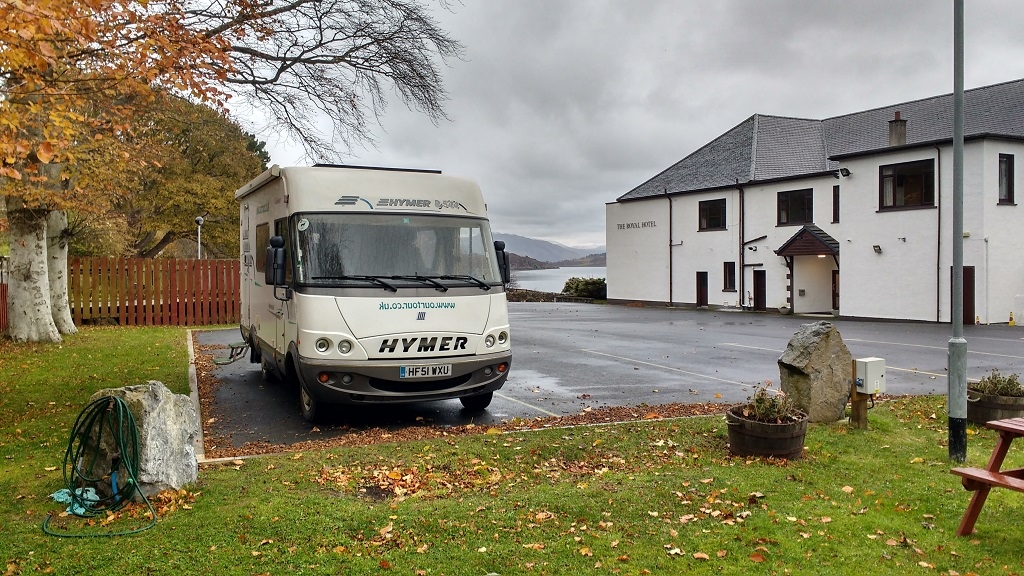
We’ve used Britstops in the past and found it good, but it can get quite expensive as in practice you need to eat out to keep the scheme going. Some businesses are mapped out on park4night. These options offer the chance to get closer to the locals, an opportunity to chat with them and get some insight into the area and their way of life. They don’t usually have any facilities so you’ll need a self-contained van.
Paid Overnight Parking in Scotland
There are two types of paid overnight stopover: formal and well, less formal! The formal places are pictured below, some of which are in cracking locations.

Formal park-ups clearly state motorhomes can stay overnight in return for payment, and we found all the ones we’ve used on park4night. Typically they’re around £10 a night but some are up to £20 (the best-located ones are very popular, even at this price). They don’t usually have any services, although might have bins and/or fresh water. There are various ways to pay, some require an app, some allow payment with cash or card at a machine and at others you visit a local business to pay.
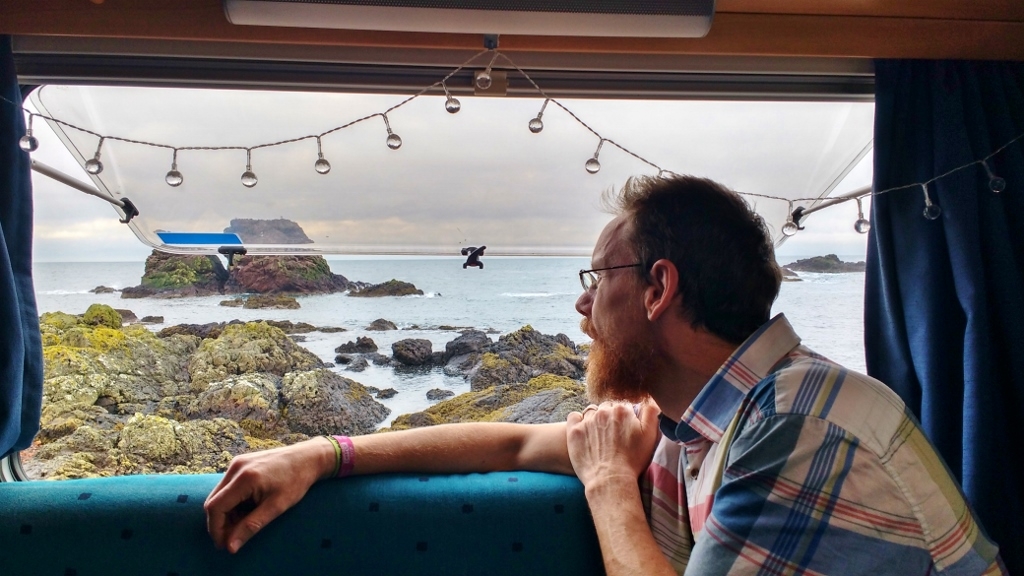
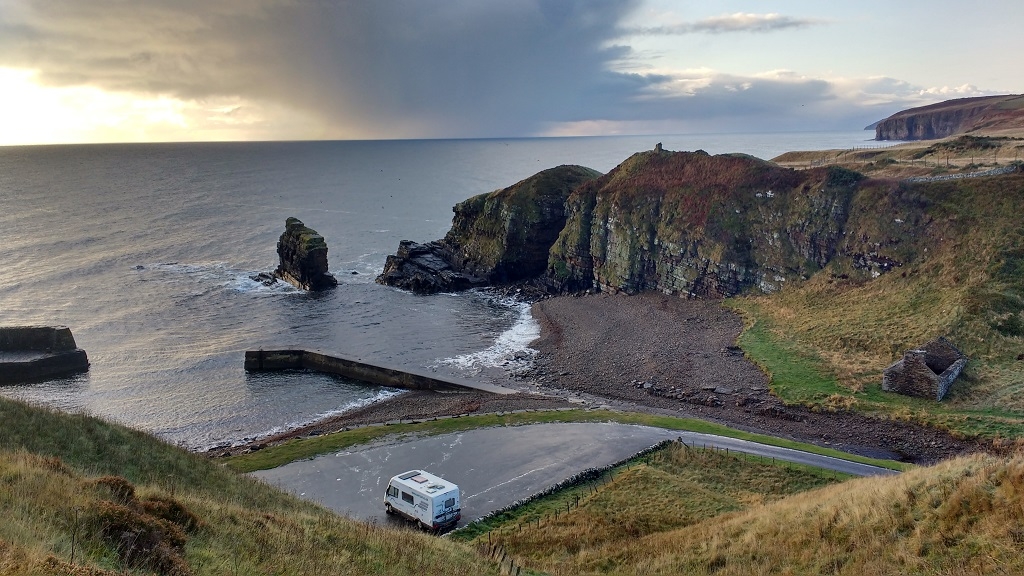

Less formal paid parking areas accept payment for 24 hours, but don’t clearly state that motorhomes can stay overnight. For example, we stayed at the New Lanark visitor’s centre car park (pictured below) which charges £3 for 24 hours. The signs say nothing about no overnight stays, and we shared the large parking area with several other motorhomes. Again we’ve found our park-ups on park4night.
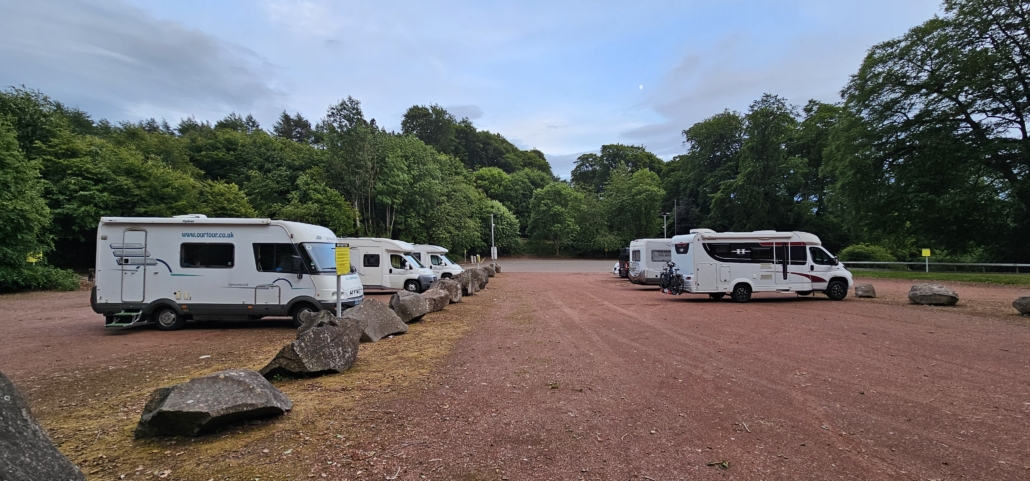
Forest and Canal Stops in Scotland
Forestry and Land Scotland maintain car parks across the country. Some of these are free to stay overnight and require no booking. They have no services, may be too small for your rig, may be busy with cars, sloping and so on, so it pays to do some research before travelling to one. Some of their car parks are now regulated but you can stay for one night if you book and pay. These are all listed under the Stay the Night scheme described here.
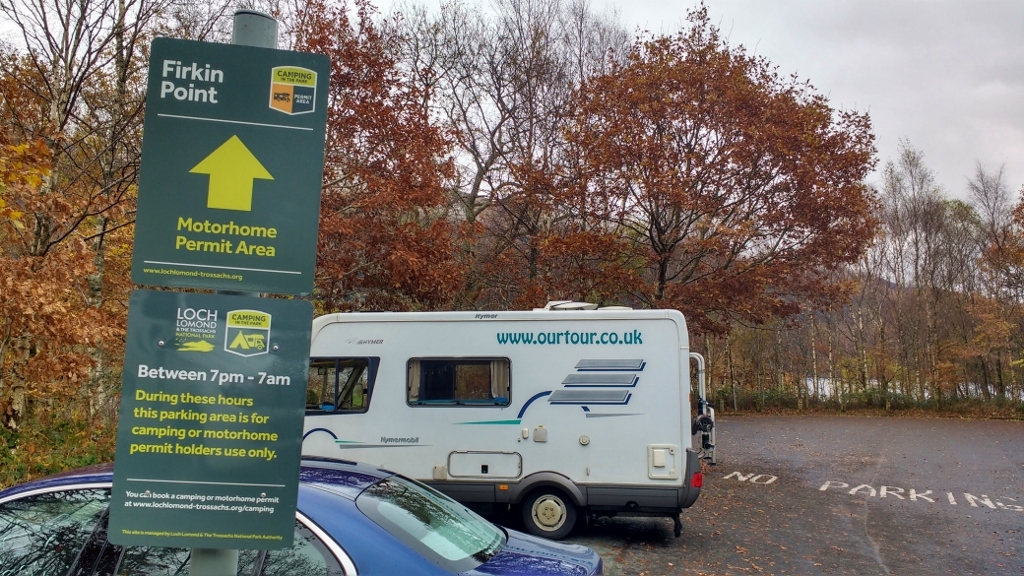
We only stayed in one Forest car park on this trip, illustrated below, which was free and had a great forest and coastal walk. We tried to book into one of the Stay the Night car parks on Loch Lomond but it was full for days ahead, so we skipped it.

Scottish Canals also has a Stay the Night scheme where you can officially park overnight at their canals. Their website is a bit odd, as it has a booking option but also clearly states you can’t pre-book these locations and must pay on arrival. We looked at staying at the £10-a-night Crinan Canal stopover (which we found on park4night). We didn’t go in the end, as the road north from there looked very narrow so it would have been a long out-and-back to get there. Without knowing whether there was space we opted to bypass it.
Where We’ve Slept in Scotland in a Motorhome
This map shows everywhere we’ve stayed in our motorhomes (obviously not just Scotland). Click on any icon to see details of that spot, and a link to the blog post we wrote about it.
Where to Go in Scotland
The obvious ‘big hitter’ for motorhome touring in Scotland is the North Coast 500. This circular 516-mile route was created in 2015, using roads around the north (official website here, or check our the very popular Robbie Roams NC500 book). There’s no requirement to complete the whole route, and we found the northern and western parts of the route to be the stand-out sections for us.
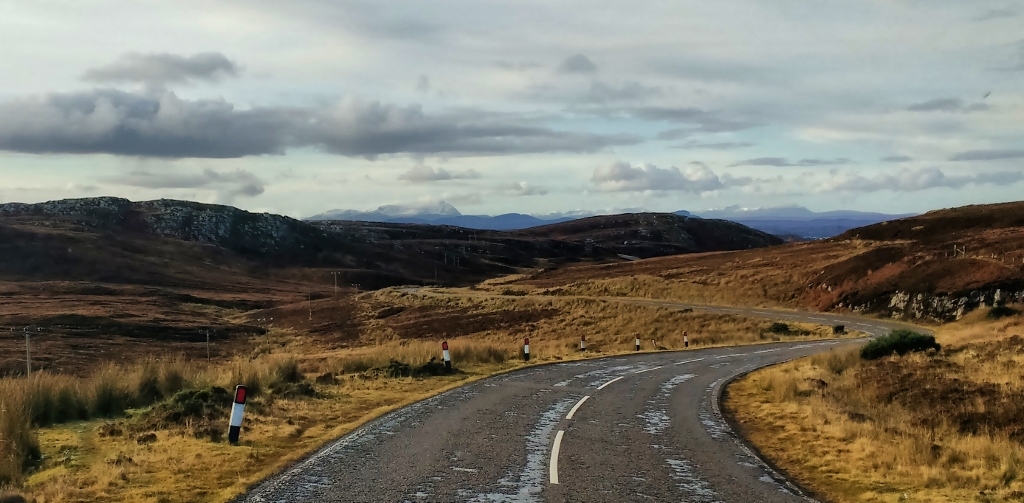
The NC500 is hugely popular and has attracted criticism for being over-subscribed. It takes in long stretches of single-track road which were never intended for heavy traffic. They’re not dangerous, but anything other than a few occasional cars makes for slow progress, frustrating the locals and tourists alike in peak season. Wild camping is possible along the route but there are limited options, and they appear to get over-full in peak season.
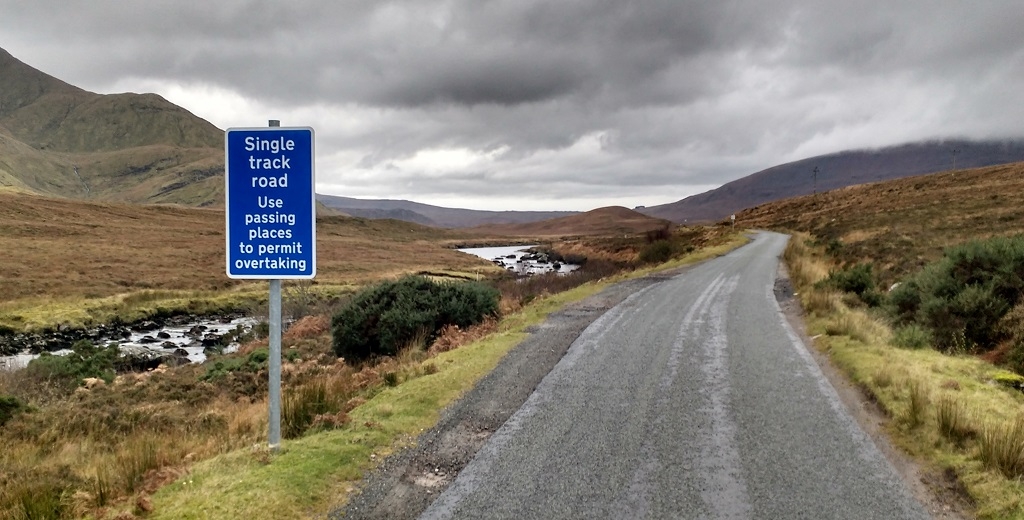
Following the success of the NC500, various other routes have been promoted, including:
- The Heart 200 – 200 miles around central Scotland.
- Kintyre 66 or K66 – a 66 mile loop around the Kintyre peninsula.
- South West Coast 300 or SWC300 – 300 miles of south west Scotland.
- North East 250 – a 250-mile circular route through Aberdeenshire, Speyside, and Moray.
- The Coig – five touring routes around Ayrshire and the Clyde Islands of Arran, Bute and Cumbrae.
On our most recent trip we intended to travel up the west coast, but found ourselves unable to leave the Isle of Arran, it was such a fantastic island. The weather helped, endless sunshine. But the landscapes, wildlife, fell hikes and runs, snorkeling, wild swimming, restaurants, campsites and wild camps were top-notch. We intended to stay a few days but we were there two weeks.
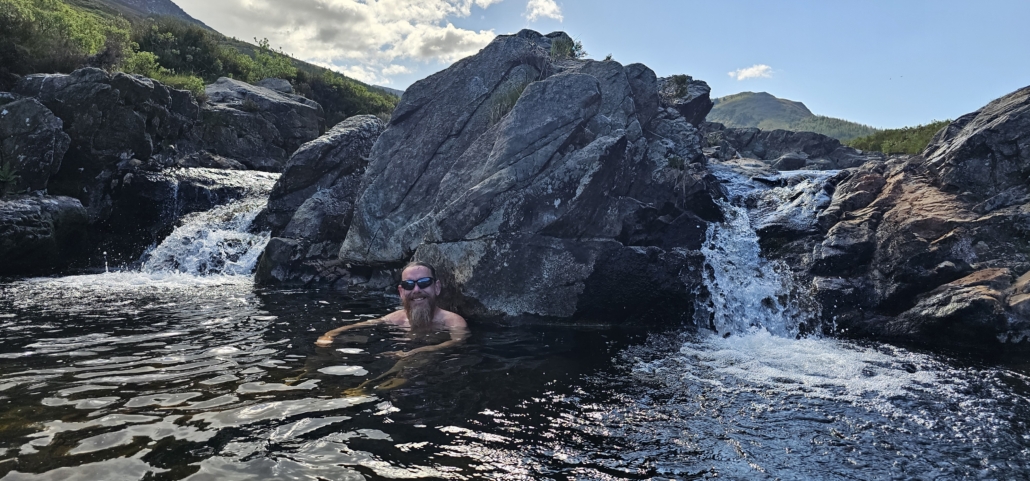
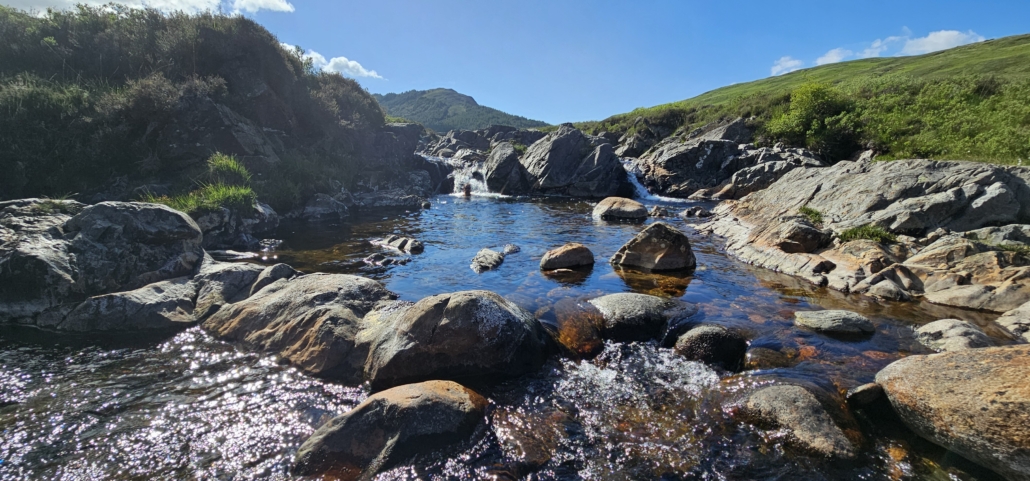

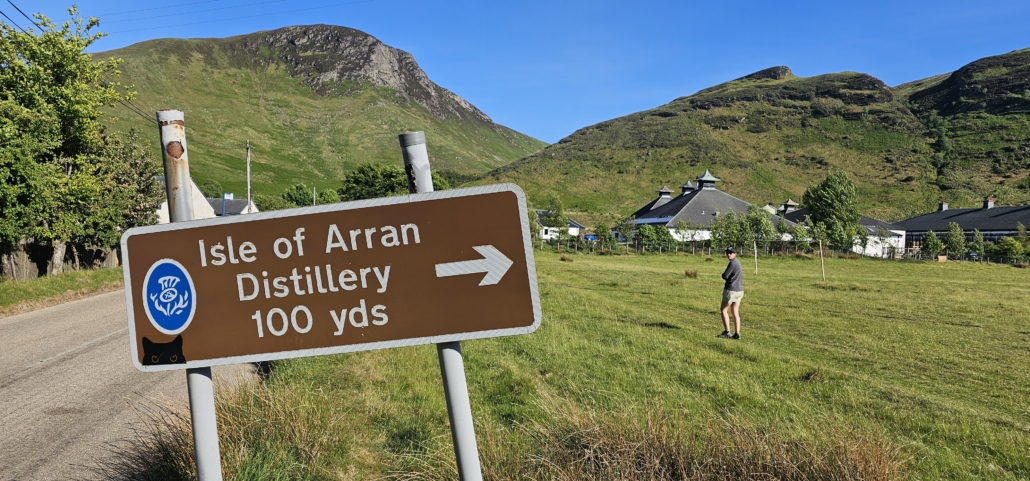

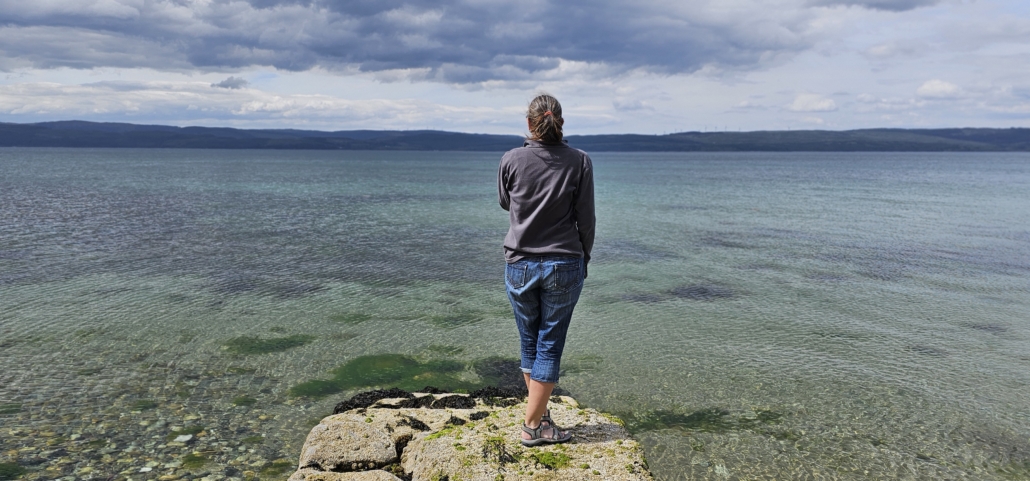


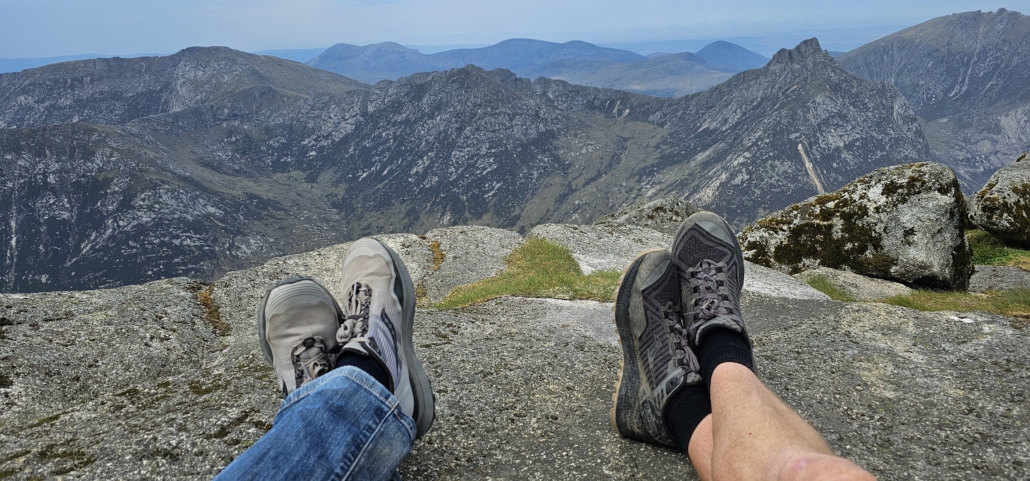
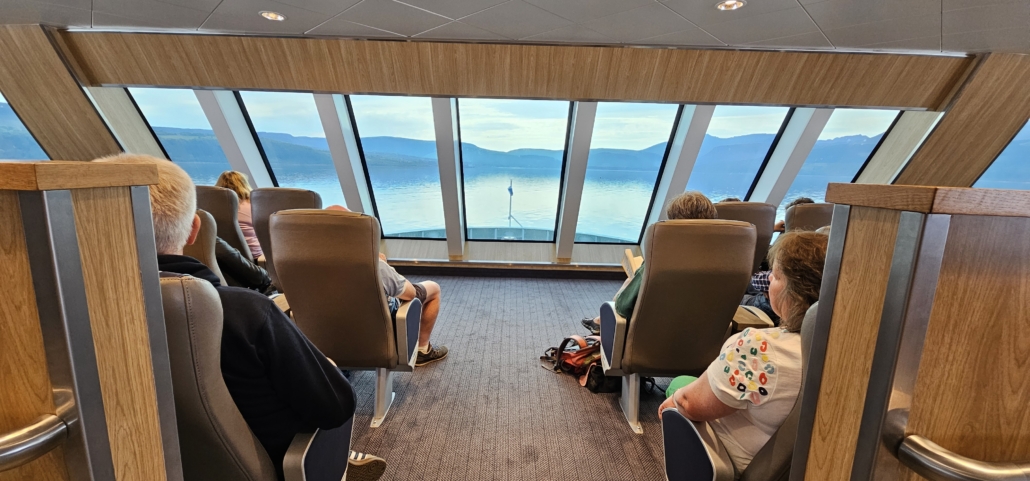
Useful Resources for Scotland Motorhome Trips
When you’re planning your trip or about to set off, here are a few of the resources we found useful in Scotland:
Apps and Websites
- Park4night – best for free and low-cost park-ups. Has an option to show low emission zones too.
- Search4sites – all purpose, maps out CAMpRA Aires
- UK Campsite – best for campsites, some are tent-only, check before arriving
- MyLPG.eu – good for finding self-refillable LPG stations
- CalMac – ferry info and booking for the Clyde and Hebrides
- Visit Scotland – information about other ferry crossings
Books and Maps
Note: these are affiliate links, so we earn a small commission if you buy through them. The cost to you is the same.
- Take the Slow Road Scotland – good for inspiration, we didn’t follow any of the routes
- No Fuss North Coast 500 – we’ve not used this but it gets great reviews
- AA Road Atlas or Collins Road Atlas – handy for spotting those single-track roads!
- Lonely Planet Scotland or Rough Guide to Scotland – great for inspiration
- Sea View Camping Scotland – details of some of the best seaside sites
Hiking & Cycling
- Walkhighlands – free photo-by-photo routes across Scotland, including great nuggets of local info
- OS Hiking Routes or the OS app
- All Trails – paid app for finding hiking trails across Europe
- National Cycling Network Scotland – or view the cycling network on OS Maps
Food, LPG and Diesel
Unsurprisingly, all of these are available in Scotland! Diesel is available pretty much everywhere, although we noted it was about 20p a litre more expensive on the Isle of Arran compared to the mainland. We used the PetrolPrices app to check where the cheapest fuel was available. Fuel stations can be few and far between in more remote spots, so fill up when you can.
If you’ve a self-refillable LPG system, pumps are relatively few in Scotland. Plan ahead folks. We used the mylpg.eu website and had no trouble filling up at Lochgilphead, although they did charge us £1.39 a litre! Ouch, most places are 99p up there. Good job we don’t use that much of the stuff. As we don’t use Calor or Flogas, we didn’t look for refills, but we expect them to be much more widely available than LPG self-refill stations.
Food is an interesting one. When we arrived in Scotland, the Co-Op had been hit by a cyber attack. In many more remote places, Co-Op were the only grocery shops available, and they’d limited fresh food as a result of the attack. Not great for the locals.
You’re not likely to see the same, we hope! Even so, ‘supermarkets’ are only available in larger towns and cities. In smaller towns you might find an ‘express’ style Tesco or Co-Op for example. More remote still, we found ourselves in the local post office grocery section, very happy to be able to buy food, at whatever the cost. In Lochranza there were zero grocery shops, despite having a ferry terminal and campsite.
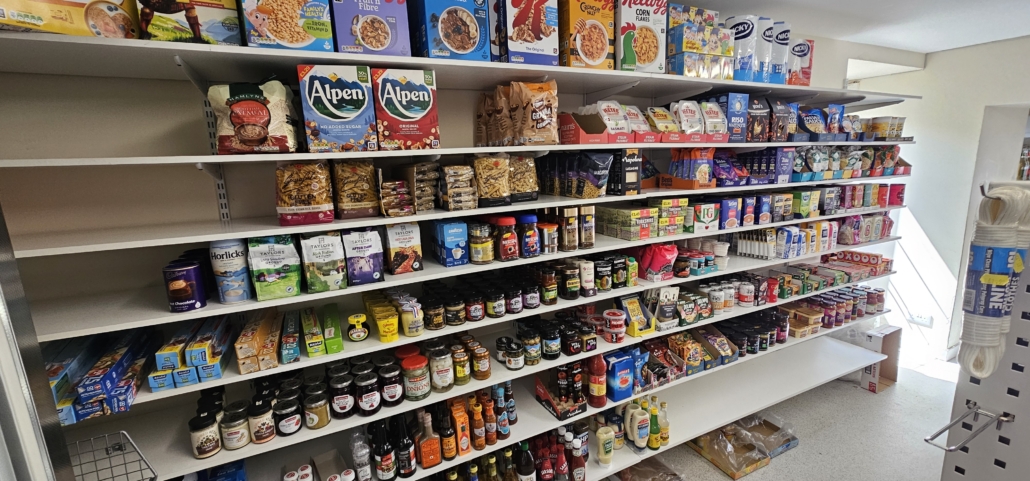
There’s much pressure to ‘buy local’ these days, which we did much of the time. We enjoyed locally-produced cheese, ice cream and sausages. But that said, we were happy we’d stocked up in Morrisons on the mainland before venturing off into the unknown.
The Scottish Weather
You never know what you’re going to get with the weather. We’ve toured Scotland in May, in the summer and in November. And the weather’s always been a mixed bag. On one two week trip up the west coast in summer it hammered it down for the first week until we were going stir crazy and ready to head home. At which point it brightened up. In November we enjoyed cold nights (one morning the entire parking area was sheet ice), but clear blue skies. While we have winter tyres fitted to our van, that sheet ice night was the closest we’ve been to needing them (it melted quickly in the morning).
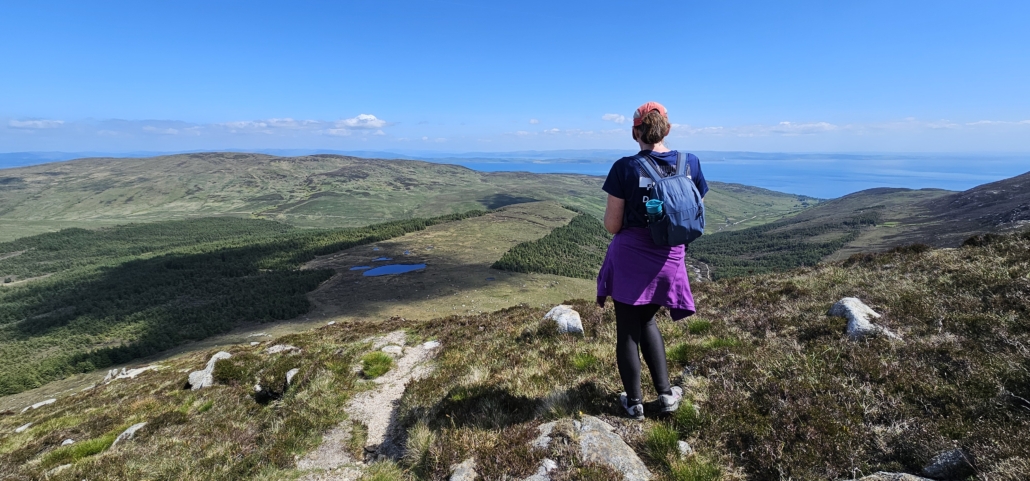
On our latest trip, we had two weeks of blazing sunshine, followed by another three of rain. We went from beautifully still air to being rocked by 40 to 50mph gusts. Without full waterproofs, hiking in the fells went off-limits. Although we got close to Ben Nevis, we didn’t head up as it was -12°C at the top with wind chill.
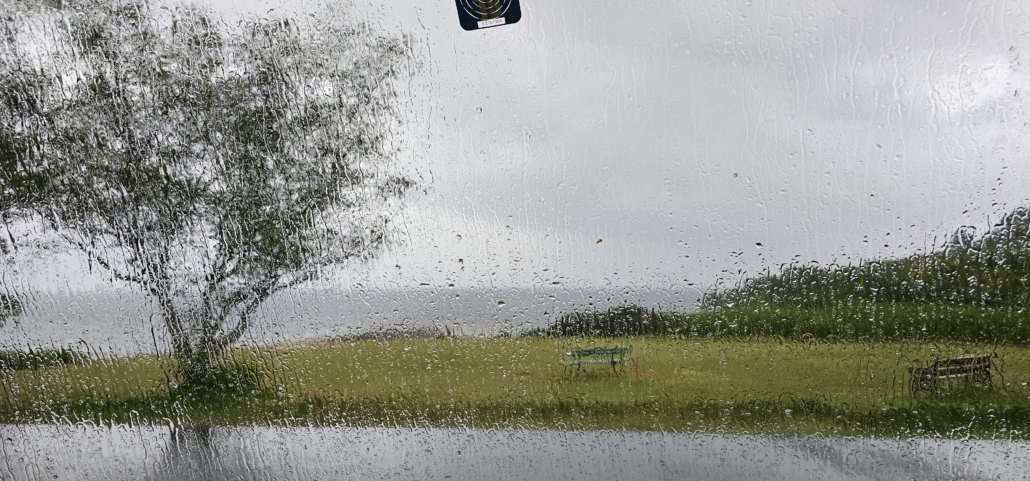
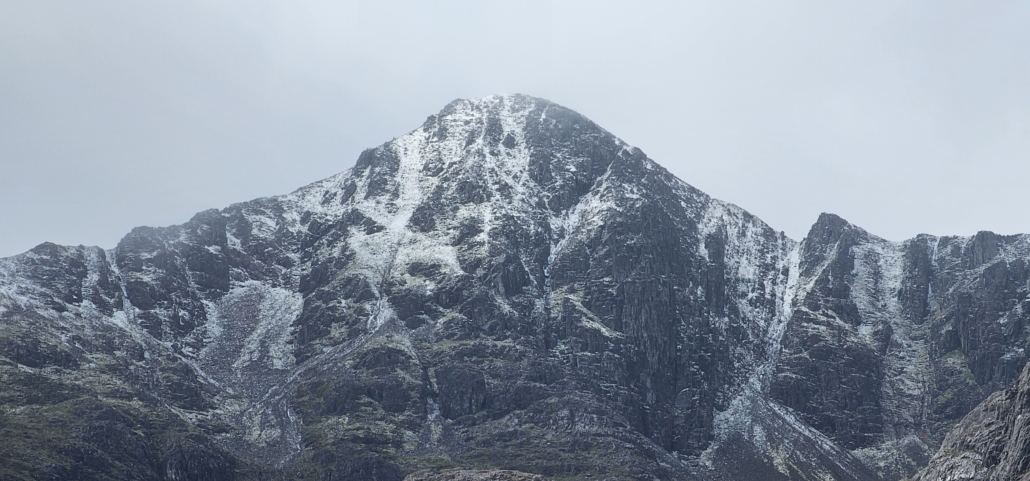
What can you do? Head east perhaps. Rain-laden winds from the Atlantic dump more water on the west than the east. So that’s an option. Otherwise it’s a lottery I guess. Bring clothes for all weathers too. Our waterproofs weren’t very waterproof this time around, a lesson learned for our next trip up north.
Midges and Ticks in Scotland
Scotland is infamous for little tiny biting flies called midges. They emerge around dawn and dusk, and will feast on your skin given half a chance. They’re unable to fly in wind, so are less of a problem in coastal or exposed areas. They’re generally knocking about between May and September. When we visited in November, we didn’t see any. In May and June we saw a fair few, with small clouds of them in some wet, sheltered spots.

We bought an insect repellant called Smidge which was recommeded by locals, smells quite nice and seemed to work (hint: buy before you leave home, it can be quite expensive in local shops). Some folks wear head nets allowing them to hike through areas infested with midges or sit outside in the evening. We didn’t find we needed anything like that. If we spotted midges around our parking area we tried to keep the doors, windows and skylights closed.

While midge bites are annoying, ticks are more of an issue if you get bitten, as they can carry Lyme Disease. Ticks are little spider-like creatures which hang about on grass or vegetation and attach themselves to you as you pass. If they can find skin (hint: wear long trousers when hiking), they’ll burrow head-first into you and suck your blood. Boff. We only got one on this trip. They don’t hurt but as mentioned can carry disease.
If you find a tick, you can get special tick removers which slot around the tick and allow you to slowly twist them off. Or use a pair of tweezers to carefully pull them out without crushing them. You need to try and get them out without squeezing them or leaving their head in your skin, so be gentle. After finding the tweezer method tricky, we’ve now added a set of tick removers to our first aid kit.
Using Ferries in Scotland
We were shocked (pleasantly) to discover we could get a ferry from Troon to the Isle of Arran for two adults and a 6m motorhome (with a rear bike rack) for just over £30 one-way – although the price did increase massively for a van over 6m. About double the distance of a Dover to Calais ferry, for a fraction of the price. The reason: some ferries in Scotland are subsidized (under the Road Equivalent Tariff scheme), and this is one of them.
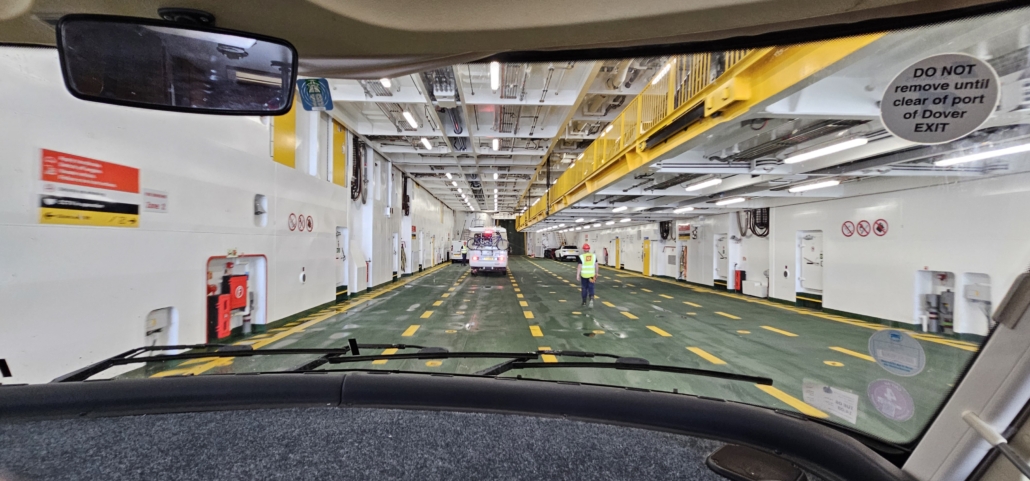
Eyeball a map of Scotland and it’s obviously a fragmented landcape. Islands and penisulars abound. A few islands have bridges, but most don’t. Some ferries between mainland areas cut out seriously long detours. You can of course tour Scotland without using a single ferry, the NC500 for example doesn’t use them and you can visit Skye using the bridge over Loch Alsh. But they’ve an adventurous feel to them, and we enjoy taking a few while we’re in Scotland.
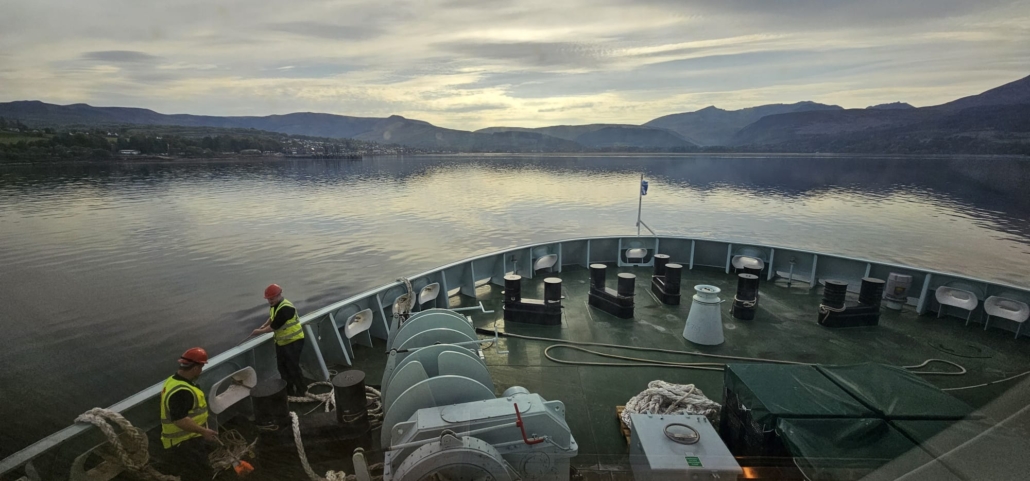
Most ferries on the west coast are operated by Caledonian MacBrayne (everyone seems to call them CalMac). We found their website to be good, enabling us to easily see how much a route would cost us and to book tickets. These were emailed to us and included a QR code. For larger routes the tickets were for a specific time. For these we arrived an hour or two before the boat (way too early on one occasion) and waited.
Eventually a staff member comes over and scanned the code on our phone and sent us to queue up to board. On smaller crossings tickets were for any ferry on the chosen day, we just turned up and queued in a parking area at the port (check when the last ones goes). All the Scottish ferries we’ve used have been roll-on roll-off, no need to turn around on the boat or reverse on. No-one checked our gas was turned off on our latest crossings, but CalMac require this in their terms and we guess others will do too.
You may need to book well in advance for some crossings in the summer, we don’t know, we only booked a few days before ours in May and June. Note also that poor weather, routine and not-so-routine maintenance can take ferries out of service. There was no crossing from Ardrossen to Brodick during our trip, for example, as the new ferry couldn’t use that port. Best not to assume a specific crossing is definitely in service and to check ahead of travelling.
Another point to note: some ‘ports’ are just a concrete ramp into the sea, like the one at Lochranza on Arran pictured below, and the one leaving Mull at Tobermory. If you’ve a long overhang you might want to eyeball these on Google Maps before you turn up. Or ask around on forums/Facebook etc, as you might grind out the rear of your van boarding or leaving the boat. The roads from and to these small ports might include long stretches of single-track too, allow plenty of time.

Many other ferry companies serve Scotland. P&O and Stena Line cross between Scotland and Ireland. Companies such as Northlink and Pentland head out from the mainland to Orkney and Shetland. Orkney Ferries offers inter-island services, and Shetland Ferries do the same. The Corran Ferry is operated by the Highland Council. In summary: there are lots of companies running lots of boats around Scotland!
Internet Access in Scotland – 4G and 5G
We were pleasantly surprised at how often we had good-enough 4G or 5G internet to stream TV while touring Scotland in 2025. Other than uploading blogs, we don’t work on the road and didn’t need to move large data files or make video calls. Of course we relied on the internet heavily for researching places to go, route planning, reading up on history, getting info on walks and wildlife, checking the weather, all the usual stuff.

We took an unlimited data pay-as-you-go Smarty SIM with us, which uses the Three network. This was in a 4G router which is attached to a large roof antenna (more information about our motorhome internet system here). Our phones work with 4G and 5G, and had 1pmobile SIMs which use the EE network. We paid for 50GB 1pmobile data packs for our phones.
This combination proved pretty reliable. We were often in remote areas with no houses visible, but could usually still get a signal. If we’d nothing on our Smarty SIM (Three), we’d usually have a 4G (occasionally 5G) connection on our 1pmobile (EE) SIMs in our phones. In one campsite we had no data at all (at Lochranza on Arran) but the campsite WiFi was usable. At one other location we’d barely a signal on our Smarty SIM (it came and went during the day) and no data on our phones. Other than that we were well connected.
While traveling one reader told us about multi-network SIM cards. These automatically connect to any available network, so you’ve a far better chance of having a signal in remote spots. We did some research though, and these look expensive and complicated, so we’d happily stick with our Three/EE combination in future.
If you really want to be sure of a connection, then a combination of a couple of cellular networks and a Starlink System is perhaps the way to go. Starlink connects you to the internet via satellite. The equipment costs are relatively low now: see prices for Starlink Standard on Amazon or Starlink Mini on Amazon. Connection costs aren’t cheap though (check prices here).
Driving a Motorhome in Scotland
Our motorhome is 3,500Kg, roughly 2.2m wide and 6m long. I’d love to say it’s easy to drive it in Scotland, but it isn’t. To be immediately fair to Scotland, it’s not easy to drive our motorhome in many other countries either! Scotland’s rugged landscape, like Norway’s, means wide roads are hard to construct in places. Many areas have such a low population density it’s just not worth expending all the effort to build and maintain anything more than a single lane road.
By no means does this mean Scotland is off-limits to motorhomes. At least not to ones around our size or a metre or so longer. It just means some drives are going to take longer, and some are inevitably going to require concentration and a stiff drink (or very strong coffee) at the end!
Single Track Roads
Kicking off with single-track roads. In our opinion, these aren’t the hardest roads of Scottish roads to drive. Take your time and use the passing places correctly and you’ll be golden.


The best way to see which roads are single track is with a road atlas like those from Collins or the AA. These clearly show which roads are single track (check the legend) so you can plan to either avoid them, or take extra time. Single track roads have frequent passing places (widened areas). You can see the motorhome in the photo above is just driving past one. These are usually (but not always) marked with a sign so you can spot them in the distance. Passing places serve two purposes:
1. To allow oncoming traffic to pass. When you spot someone in the distance (or much closer up on winding routes!), one of you needs to stop at a passing place or reverse back to the nearest one. Cue lots of miscommunication and confusion. It’s not easy to know which passing place to stop in, or if an oncoming vehicle is sat out of sight waiting for you. Eventually it’ll work itself out. When it does, you need to stay left. If the passing place is on your right, stop next to it on the ‘main road’ and let the other vehicle drive into the passing place to get past. If it’s on your left, drive into it so the other vehicle can drive by on the road.
2. To allow faster following traffic to pass. Again, more confusion as you pull in and the following car has no idea why you’ve stopped. Putting hazards on or waving them on through a cab window helps. They may give you a friendly thankful horn honk as they pass.
Passing places tend to not be very long. If you’re in convoy, it’s tempting to stay close behind your mate on these roads. Only issue is if you don’t both fit into a passing place the road is blocked and someone is in for a long reverse. If you leave at least one passing place between you, you can avoid both blocking the road and becoming an overnight sensation on Facebook groups.
Theoretically Two-Lane Roads
Some roads in Scotland are two lane, as in they had a white line down the middle, but aren’t wide enough for another vehicle to pass a motorhome at speed. Some of the coastal road around Arran fits into this category, especially if we met the bus. Most of the time we had good visibility and could spot oncoming vehicles. We’d then find a slightly wider bit, slow down, edge the van hard up against the edge and stop. The other vehicle would crawl past and on we went. Not the most relaxing of driving, but (almost) everyone was happy to take their time passing on these roads.
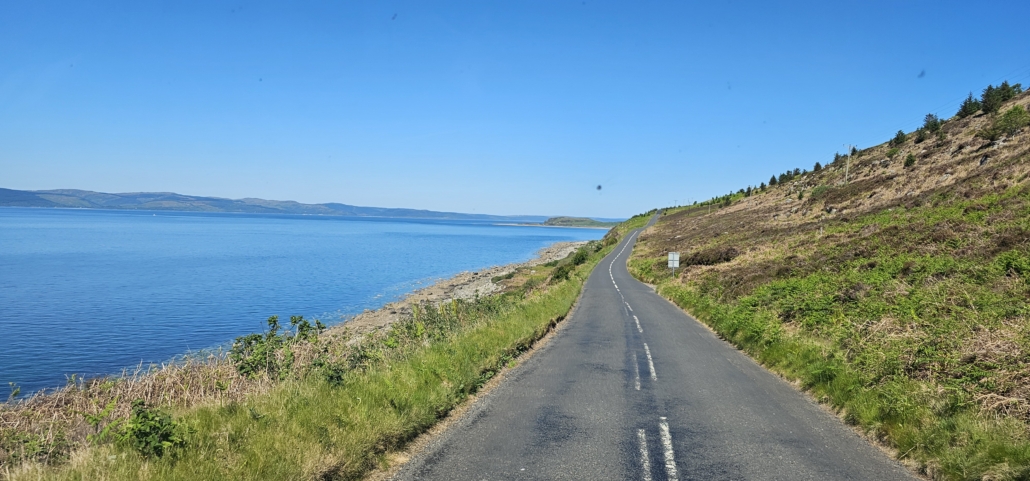
Two-Lane Butt Clenchers
Sorry, I don’t know how else to describe these roads! They’re A roads, and lorries and coaches use them, but they require some serious concentration to avoid losing a wing mirror. The A82 down the west coast of Loch Lomond definitely fits into this category, as does the A72 north of Lanark.
I love our motorhome, once we’re parked up and enjoying all the space. I don’t love it when we’re on roads like this, and was seriously wishing we’d a narrower panel van! Other than driving a smaller, more nimble vehicle, I don’t know what to suggest with these routes. Much larger vehicles than us use them, and maybe us being left hand drive is making them feel much worse than they are? In future we’ll either avoid these two sections of road, but maybe try and drive them earlier or later in the day when there is less traffic.
Low Emission Zones and Toll Roads in Scotland
There are LEZs in Glasgow, Aberdeen, Dundee and Aberdeen. You can check if these affect your vehicle on this website. If you enter any of these areas in a non-compliant vehicle you’ll be issued a fine. There are maps of the Scottish LEZs here. They only currently cover the very centre of cities, so are probably not going to be an issue for most motorhome tours.
There are no toll roads or bridges in Scotland.
Scotland and Parkrun
If you’re able to walk or run 5km (just over 3 miles), Parkrun offers a great opportunity to get chatting with locals and tourists alike. These free events take place every Saturday morning at 9:30am, at various locations across in Scotland.

Register on their website and download a barcode, and that’s it. The same website shows where the runs take place, and offer parking information and so on. Just turn up with your barcode at about 8:45am on Saturday morning, listen to a briefing and off you go. It doesn’t matter how slow you are, you won’t be last as Parkrun lay on a walker who accompanies the last person around.
Taking Your Dog to Scotland
While it’s been several years since we’ve visited Scotland with a dog, it appears to be as pooch-friendly as ever. Most beaches allow dogs year-round. Some have restrictions in summer, and you might need to use a lead to avoid disturbing nesting birds, resting seals and the like. Ticks can be an issue in Scotland, make sure your pooch’s treatment is up to date and think about fitting a tick collar. A few campsites won’t allow dogs, and some will charge extra for them, check before booking.

Thank You!
Right, that’s it! Thanks for reading folks! If we’ve missed anything please feel free to share your questions and thoughts in the comments below. Cheers, and happy travels, Jay and Ju



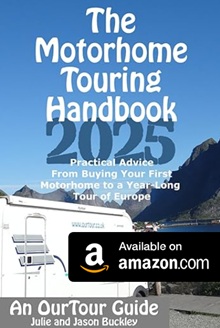

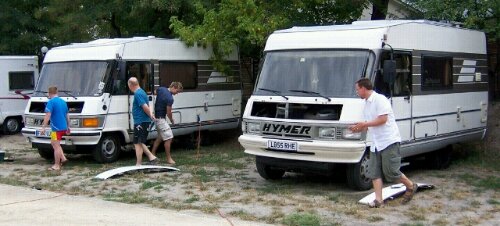

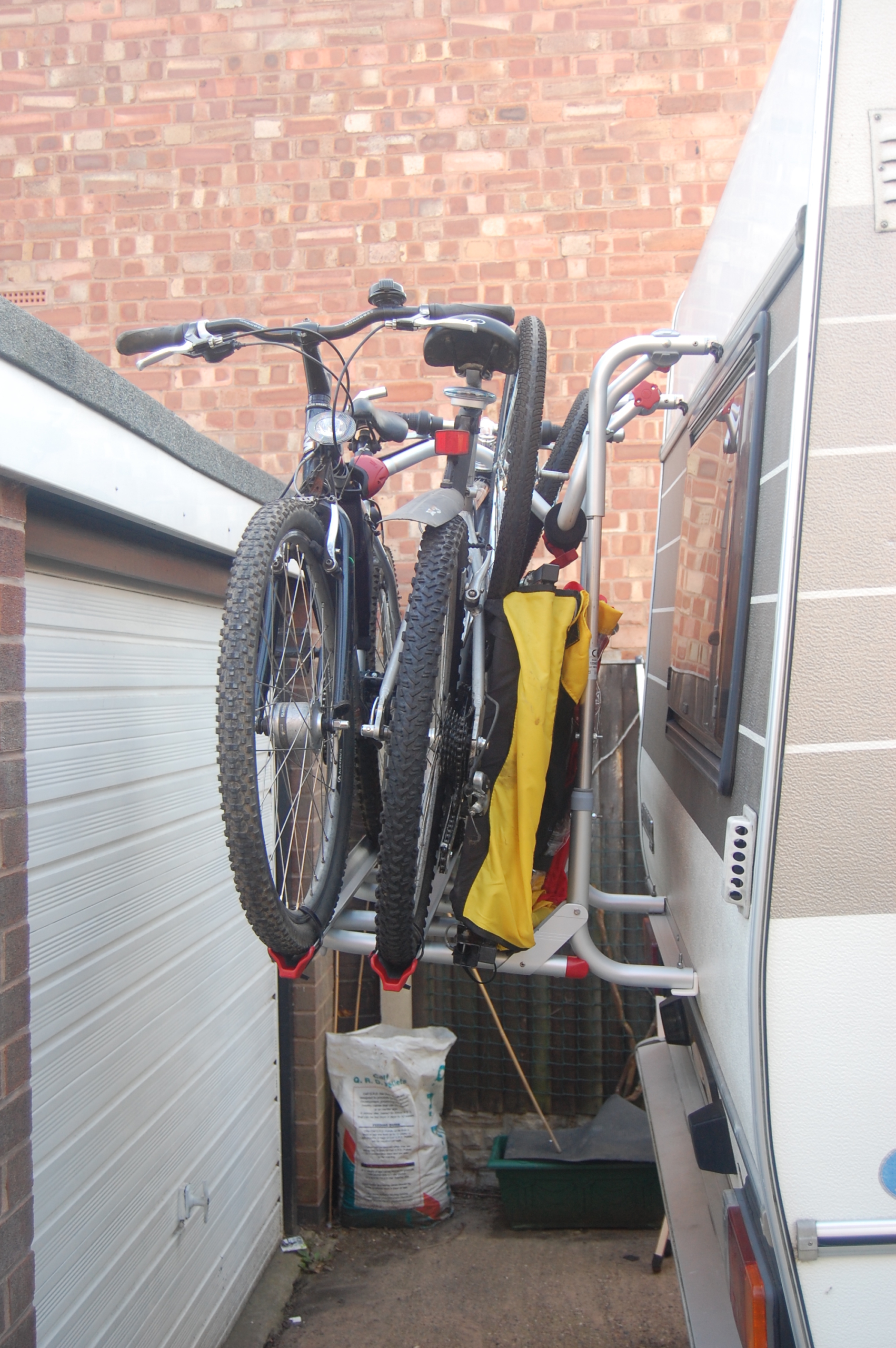
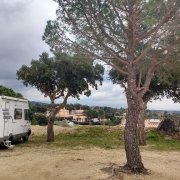


Leave a Reply
Want to join the discussion?Feel free to contribute!